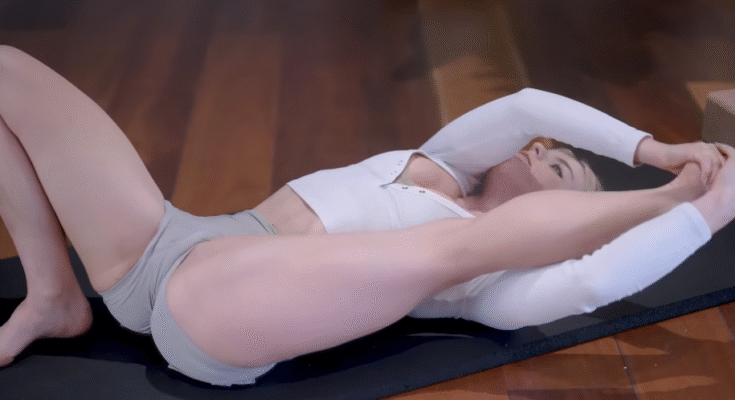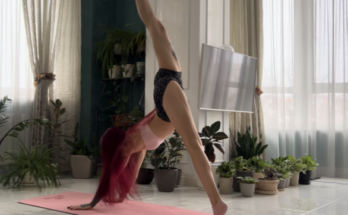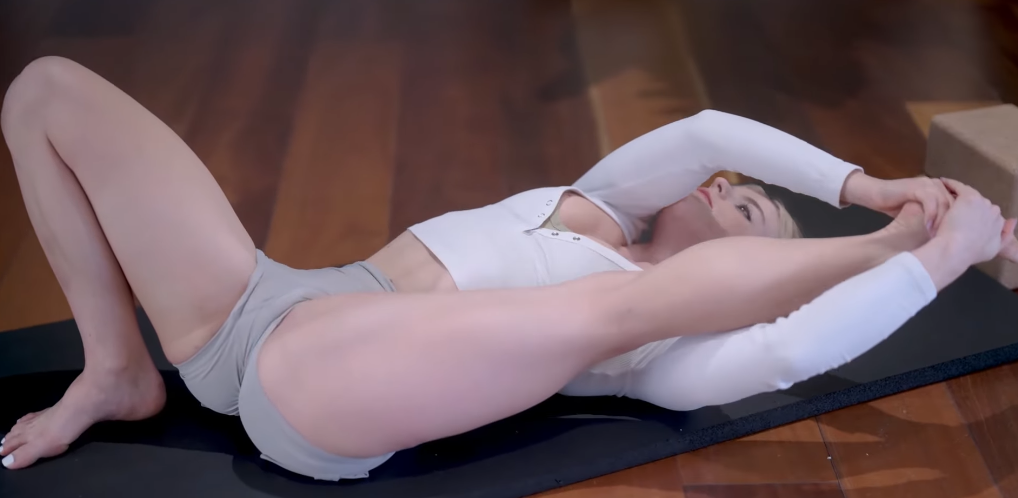
Stretching is one of the most vital yet often neglected components of fitness. People spend hours strengthening their muscles in the gym, running outdoors, or training for endurance—but forget that flexibility plays an equally important role in performance, recovery, and overall health. Among all the muscle groups, the hamstrings—a trio of muscles located at the back of your thighs—tend to be tight in most people. Whether you’re an athlete, an office worker, or simply someone who wants to move without stiffness, deep stretching for hamstrings can transform how your body feels and functions.
Understanding the Hamstrings
Before diving into the stretches, it’s essential to understand what the hamstrings are and why they tighten so easily. The hamstrings consist of three muscles:
- Biceps femoris – runs along the outer part of the back of your thigh.
- Semitendinosus – positioned toward the middle.
- Semimembranosus – the innermost muscle.
These muscles connect your pelvis to your lower leg bones, allowing you to extend your hip and bend your knee. You use them every time you walk, run, jump, or even stand up from a chair. However, prolonged sitting shortens these muscles over time, making them tight and less flexible.
Tight hamstrings can cause a chain reaction throughout your body—leading to lower back pain, poor posture, and even knee discomfort. Therefore, deep stretching is not just about flexibility; it’s about restoring balance to your entire body.
Preparing for Deep Stretching
Before performing any deep stretch, preparation is key. Cold muscles are more prone to injury, so it’s best to warm up first. Spend 5–10 minutes doing light activity such as brisk walking, gentle jogging, or dynamic leg swings. Feel the blood flow through your body, gradually loosening up the joints and increasing temperature in the muscles.
Once you’re warm, find a quiet space—preferably with a yoga mat or a soft surface. Breathe deeply, calm your mind, and prepare to move slowly and with intention. Deep stretching isn’t about forcing the body into position—it’s about listening to your body and allowing it to open up naturally over time.
1. Seated Forward Fold (Paschimottanasana)
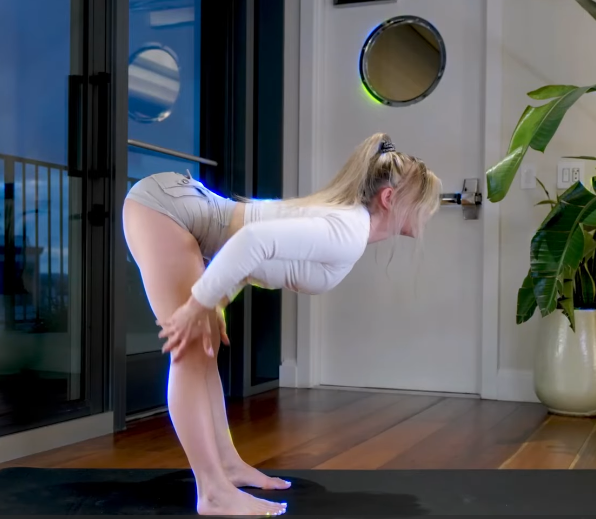
This classic yoga pose deeply stretches the hamstrings and lower back.
How to do it:
- Sit on the floor with your legs extended straight in front of you.
- Keep your spine long and your toes pointed toward the ceiling.
- Inhale deeply, lifting your arms overhead.
- As you exhale, hinge from your hips and reach toward your feet.
- Keep your spine as straight as possible—avoid rounding the back.
- If you can’t reach your toes, grab your shins or use a yoga strap.
Hold for 30–60 seconds, breathing deeply. With each exhale, allow yourself to sink a little deeper.
Tip: Imagine your chest leading the movement instead of your forehead—this helps you maintain proper alignment.
2. Standing Hamstring Stretch
Perfect for beginners or as a warm-up stretch, this posture lengthens the hamstrings while promoting balance.
How to do it:
- Stand tall and place one heel on a low surface—like a chair or step.
- Flex your foot so your toes point upward.
- Keep both hips square and gently lean forward from the hips.
- Keep your spine neutral and avoid rounding your shoulders.
Hold for 20–30 seconds, then switch legs.
You’ll feel a deep stretch along the back of your raised leg. For a more intense stretch, pull your toes slightly toward your body.
3. Lying Hamstring Stretch with Strap
This is a safe and effective way to isolate one hamstring at a time without straining your lower back.
How to do it:
- Lie flat on your back.
- Bend one knee and place your foot on the floor.
- Loop a yoga strap (or towel) around the arch of your other foot.
- Slowly straighten that leg toward the ceiling, keeping your lower back on the mat.
- Pull gently on the strap until you feel a stretch down your hamstring.
Hold for 45–60 seconds per side.
This stretch allows you to control the intensity by adjusting the tension in the strap—ideal for gradual improvement in flexibility.
4. Pyramid Pose (Parsvottanasana)
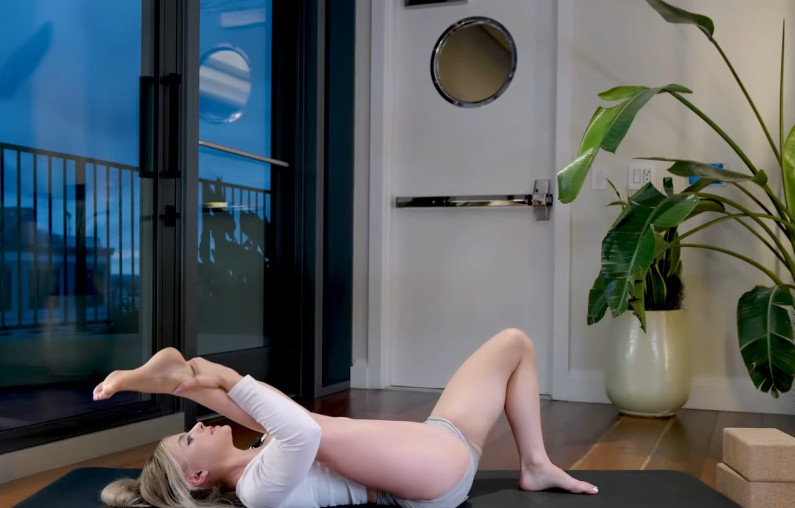
A yoga-based position that strengthens your legs while offering a deep stretch for the hamstrings.
How to do it:
- Stand with your right foot forward and your left foot back about three feet apart.
- Square your hips toward the front leg.
- Inhale, lengthen your spine.
- Exhale, hinge forward over your right leg, placing your hands on the floor or blocks.
- Keep both legs straight but avoid locking your knees.
Hold for 30–45 seconds, then repeat on the other side.
This stretch targets both the hamstrings and the calves while enhancing balance and posture.
5. Downward Facing Dog (Adho Mukha Svanasana)
One of yoga’s most iconic poses, this stretch works wonders on tight hamstrings and calves.
How to do it:
- Begin on your hands and knees.
- Tuck your toes and lift your hips toward the ceiling, forming an inverted “V.”
- Keep your hands shoulder-width apart and your feet hip-width apart.
- Press your heels gently toward the floor.
- Engage your thighs and lengthen your spine.
Hold for 30–60 seconds, breathing steadily.
Don’t worry if your heels don’t touch the floor—it’s about feeling the stretch, not forcing it.
6. Standing Forward Fold with Shoulder Opener
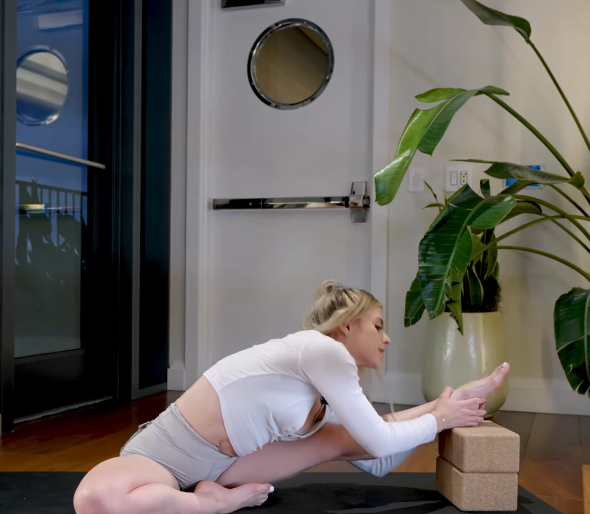
This variation combines hamstring flexibility with upper body release.
How to do it:
- Stand with feet hip-width apart.
- Clasp your hands behind your back and straighten your arms.
- Inhale, lift your chest and open your shoulders.
- Exhale, fold forward at your hips while keeping your hands lifted behind you.
- Let your head hang heavy and your knees slightly bent if needed.
Hold for 30–45 seconds, feeling the dual release in your legs and shoulders.
This pose enhances overall body alignment and counteracts the effects of sitting hunched over all day.
7. Half Splits (Ardha Hanumanasana)
A gentle preparation for full splits that deeply targets the hamstrings.
How to do it:
- Begin in a low lunge with your right leg forward and your left knee on the mat.
- Shift your hips back while straightening your front leg.
- Flex your front foot, toes pointing upward.
- Keep your spine long and your hips square.
Hold for 45 seconds per side.
Over time, this pose can drastically improve flexibility and prepare your body for deeper movements like full splits.
Tips for Safe and Effective Hamstring Stretching
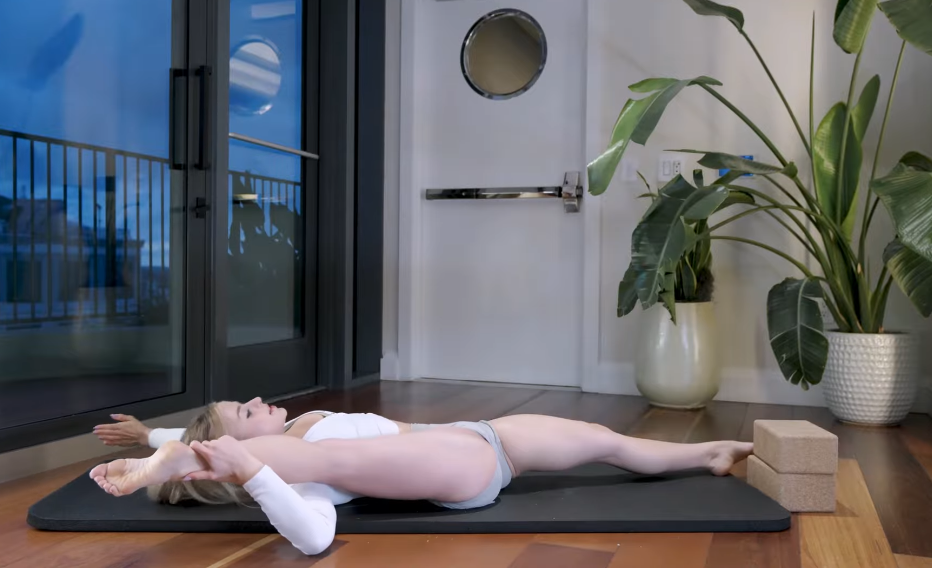
- Consistency is key. Stretch daily or at least three times per week for visible results.
- Never force a stretch. Go only until you feel mild discomfort—not pain.
- Breathe deeply. Inhale to lengthen, exhale to deepen the stretch.
- Engage your core. This protects your lower back from strain.
- Be patient. Flexibility develops gradually. Celebrate small progress.
The Benefits of Deep Hamstring Stretching
Regular hamstring stretching offers numerous physical and mental benefits:
- Improved posture: Tight hamstrings pull on your pelvis, causing slouching. Stretching restores alignment.
- Reduced back pain: When the hamstrings loosen, your lower back carries less tension.
- Better mobility: You’ll find it easier to walk, run, and move gracefully.
- Enhanced blood flow: Stretching increases circulation, promoting recovery.
- Calm and focus: The slow breathing and mindfulness of deep stretching reduce stress and anxiety.
Conclusion
Deep stretching for hamstrings isn’t just about flexibility—it’s about freedom. Every time you stretch, you release tension not only from your body but also from your mind. With patience, consistency, and mindful breathing, your hamstrings will gradually lengthen, your movements will feel lighter, and your posture will naturally improve.
So, the next time you finish a workout or feel tight after sitting all day, take ten minutes to care for your hamstrings. Breathe deeply, move slowly, and feel your body thanking you with every gentle stretch. Flexibility is not something you’re born with—it’s something you earn, one breath at a time.
